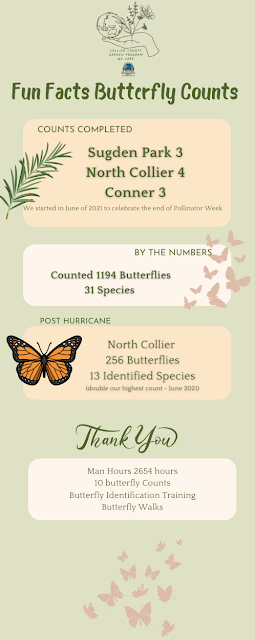Protect our ecosystems from invasion!
by Grayce Garthoeffner (Naples High School Student)
Florida is infamous for two things: travelers and the heat. With more than 35 international ports of entry, as well as a subtropical climate, it’s no surprise that we hold the record for the highest amount of invasives, clocking in at 2,032 species, and among these, 79 are plants. If you yourself are a gardener, you can agree the scene here is very different than other places in the US. I’m sure you are no stranger to failed planting attempts, bothersome pests, and of course, the invasives. Although we may easily identify the looming Australian pines that line the beaches, or kudzu that smothers native plants, there are several invasives that grow in our very own gardens. In this blog, you will discover some of these trouble plants to leave room for the ones that belong.
Starting off is a plant whose brown bulbs make them look non-threatening, almost if I may say, cute! It’s the air potato, which is native to Africa, Asia, and Northern Australia. It produces heart shaped leaves, and fruit that looks like small potatoes, giving them their name. They thrive even in poor soil, and grow rapidly, up to 5 inches in one day. Their leaves create a thick blanket over other foliage, which leads to the natives dying due to lack of sunlight. To get rid of them in gardens, simply remove the tubers, making sure to pull them all off, or else they will sprout again.
Next up is a plant which not only is uncomfortable to humans but also to native vegetation. Torpedo grass has a stiff body with pointy leaves sprouting from the sides, which Floridians know is a bit painful to walk through. It is native to Europe, Asia, and Africa, and was widely distributed in the early 1900s for cattle pasturage. Since then, it has destroyed Florida shorelines, citrus groves, golf courses, and backyards. The marshlands of Lake Okeechobee have lost over 7,000 acres to this nuisance. Like the air potato, it thrives in lots of different soils, and easily spreads. Their roots are interconnected which makes it hard to remove, allowing it to dominate landscapes and crowd out native plants. The key to removing this grass involves pure labor, using tools or gloved hands to uproot it. It is important to fully destroy the roots, making them less likely to return.
Following this is a plant that is very popular for homes in Florida but may pose a threat to natives. It is the Sprenger's asparagus fern, a vibrant green plant with spread out stems that make it look like on-land coral. It is native to South Africa and produces small white flowers that grow into bright red berries, which is an attractive factor to homeowners. But one shouldn’t be deceived by this, as its extensive root system and ability to easily grow allows it to displace native plants, preventing them from reestablishing. Just like the torpedo, the way to remove these pests is by digging up their root system completely, or if it’s potted, throw it in a bag and trash it.
Finally, is the yellow iris, which blooms pretty flowers, making it a popular plant for garden ponds. It also thrives in other bodies of water, like the Everglades, where its fast-growing nature makes it outcompete native plants, which may be ones that wetland creatures survive on. Plus, it may also take over breeding grounds for fish or birds. This characteristic of yellow irises is the same as cattails, which are another invasive to watch out for. This iris is native to Europe, Great Britain, North Africa and the Mediterranean region, proving just how flexible it is. It can withstand temperatures down to 0 degrees Fahrenheit, droughts, and high soil acidity. It is also important to note that the yellow iris is poisonous; It can cause skin irritation for humans and will sicken or kill most animals that digest it. To safely remove, the best method is to use gloves to try pulling them out close to the stem or digging them out, making sure to also clear away the root system.
Resources:
Air potato
https://sfyl.ifas.ufl.edu/natural-resources/sustainability-air-potatoes/
Torpedo grass
https://edis.ifas.ufl.edu/publication/EP615
Sprenger’s asparagus fern
https://plants.ifas.ufl.edu/plant-directory/asparagus-aethiopicus/
Cattails and Yellow flag iris
https://plants.ifas.ufl.edu/plant-directory/iris-pseudacorus/




.jpeg)



